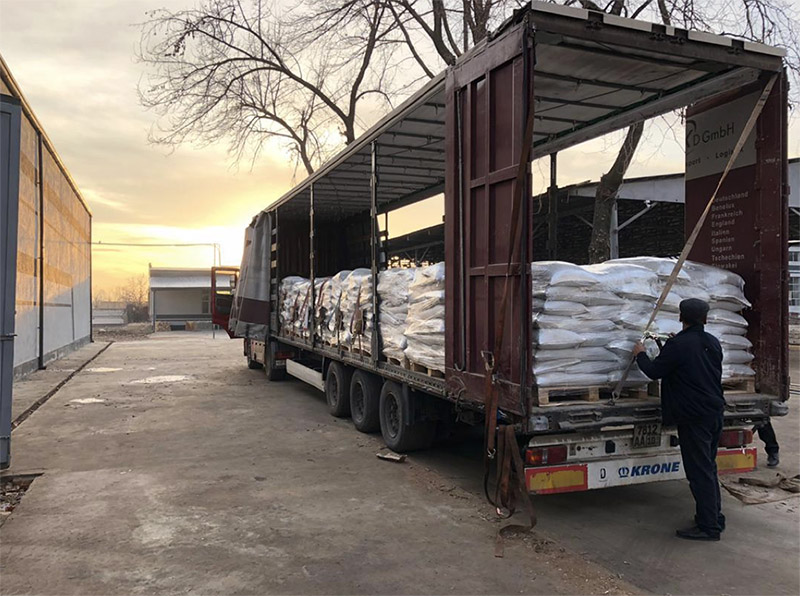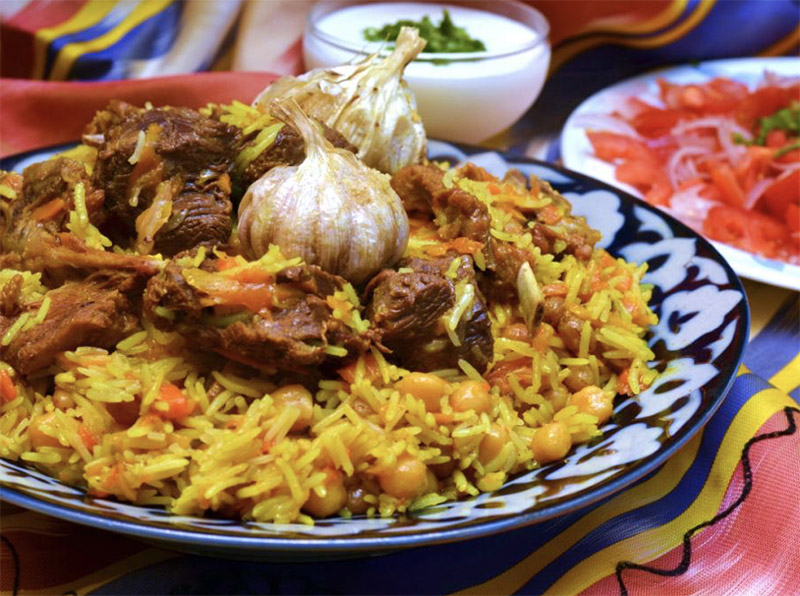March 15, 2021
With the seeding of the first pulse crop of 2021 about to begin, the GPC checks in with the director of exports for Global Export.


This March 15th marked a year since Uzbekistan reported its first case of COVID-19: a Uzbek citizen returning home from France. In the days that followed, the virus spread rapidly through the population and the nation’s hospitals soon found themselves overwhelmed by the influx of new cases. The government reacted quickly, suspending air travel from hot spots and announcing a national lockdown that started on March 23rd and remained in effect through mid-August; only then were restrictions gradually eased.
Similar lockdown measures were widely implemented around the world as nation’s attempted to contain the pandemic. But for a double-landlocked country like Uzbekistan, the impact of border closures was especially challenging for those involved in international commerce. Strict import and export controls, and border closures by neighboring countries, practically cut off all movement of Uzbek products. These measures also set back government efforts to encourage exports in order to bring U.S. dollars into the country. Pulses are a big part of that program, as 95% of the country’s production is destined for export markets.
Global Export, a GPC Gold Partner, is one of Uzbekistan’s leading pulse producers and exporters. During the height of the pandemic, it saw its sales drop off by as much as 40%.
“There were no new orders despite the fact that it was the height of the sales season,” relates Abbos Botirov, the company’s director of exports. “But this was no cause for frustration. Everyone understood that as soon as everything fell into place, demand would increase more than ever.”
When the worst of the pandemic had passed, exports did indeed pick up again and Uzbekistan finished 2020 with mung bean exports of 145,600 MT, kidney bean exports of 87,500 MT and chickpea exports of 8,800 MT.
Now, as the spring seeding season approaches, the market outlook has improved hand in hand with the public health situation. Uzbekistan plans to initiate a massive vaccination campaign at the end of the month that aims to have 60% of the population fully vaccinated by the summer. And to signal that the country is once again fully open for business, the government, for the first time ever, sponsored a national booth at last month’s Gulfood.
As growers prepare to seed the first of the country’s two pulse crops, the GPC reached out to Abbos to find out what his expectations are for the coming campaign.

GPC executive director Randy Duckworth visits Global Export’s stand at Gulfood.
Abbos: During the national lockdown, management was concerned about the well-being of our employees. We instituted a work-from-home regime and for about a month and a half, everyone worked remotely. Once we got over the peak of the pandemic, employees were allowed to return to the office, but only during specified hours and with strict sanitary protocols and mandatory masking.
Abbos: The top five buyers of Uzbek origin pulses in 2020 were: China, which took 80,240 MT, Afghanistan, which took 39,500 MT; Pakistan, which took 32,160 MT; Europe, which took 14,340 MT; and Kazakhstan, which took 5,450 MT.
Abbos: Yes. Between January and February of this year, due to late crop estimates in Argentina and Venezuela, we experienced slightly more demand for green mung beans. Also, since India opened its market, we are getting demand from there that we weren’t expecting. Indian importers are hurrying to secure product because their import licenses expire on March 31st.
Abbos: In Uzbekistan, we start every marketing year with zero inventories.
Abbos: Exactly. We seed two crops a year. The first will be planted from late March through May and harvested from June to July. The second crop is planted in July and harvested in October.
The first crop is the smaller of the two, typically accounting for 10% of national pulse production. But this year it may account for 20% of total output. This is because the type of pulses seeded at this time are kidney beans, including light and red speckled kidney beans, and blackeye beans. Right now, there is strong demand and good returns to the farmer on light speckled kidney beans, so many growers are planning to seed more of them for this first crop.
On this point, let me explain a bit about the unique dynamics of the pulse sector in Uzbekistan. For this first crop, grower interest determines what goes in the ground. This is clear with light speckled kidney beans. Because the selling price was extremely high last season, farmers made significant profits from light speckled kidney beans, and this is why the seeded area will be well above average for this first crop.
Now, for the second crop, grower interest is not the determining factor. The government requires that all growers who harvest wheat in July must seed pulses next. This is supported and controlled by the Ministry of Agriculture, which has a plan indicating how many hectares should be planted to each different kind of pulse crop – green mung bean, dry kidney beans and chickpeas – and how many tons of each should be harvested.
Abbos: It is part of the implementation of President Shavkat Mirziyoyev’s initiative to promote exports. His administration is working to increase the volume of goods exported and to open more and more markets. The agricultural sector is a big focus of these efforts.
Here is a personal example of the kind of support the sector is receiving. At Global Export, we were provided financial and organizational support by the government’s Export Promotion Agency to implement the new edition of the International Food Safety Management System (FSSC 22000). Thanks to this certification, our company was able to begin exporting to many EU countries. In 2020, we exported about 1,200 MT of green mung beans and kidney beans to several European countries, including the Netherlands, Belgium, the United Kingdom, Croatia, Germany and France, as well as others.
Moreover, the Agency has started subsidizing 30-40% of transportation costs for pulse exports. This allows us to lower our prices by 7-8%, making Uzbek pulses more competitive on the international market.
And lastly, thanks to the support of our government, Global Export participated in Gulfood 2021 as part of the very first Uzbekistan national stand.

Global Export prepares a cargo of pulses destined for the EU.
Abbos: For the first crop, 80-100,000 hectares will be seeded to pulses. Of that area, 80% will be seeded to light speckled kidney beans and 20% to red speckled kidney beans.
For the second crop, 400-420,000 hectares will be seeded to pulses, of which 55% will be green mung bean, 35% red, purple, light speckled kidney bean and black eye bean, and 10% chickpeas.
Abbos: The most consumed pulses are chickpeas and green mung beans. Our most popular national dish, osh, is made with rice, meat, carrots, chickpeas and other ingredients. I would say about 40% of the chickpeas harvested every year go to the domestic market. The other 60% is exported. Domestic green mung bean consumption is around 5-7% of production, so a much smaller amount stays here in Uzbekistan.

Osh, a popular national dish made with chickpeas.
Abbos: Global Export started to supply green mung bean seed to the Netherlands, Japan and China. We believe there is great potential in this business segment because the germination of Uzbek green mung beans is around 95-98% and our prices are really low compared with other origins like Myanmar and China.
Consequently, you can expect to see Uzbekistan begin to emerge as an important supplier of green mung bean seed, and that’s a very exciting prospect for all us at Global Export.
-11.08.25.png)
Source: Global Export

Uzbekistan / China / Afghanistan / Europe / Abbos Botirov / Global Export / mung beans / Pakistan / Kazakhstan / speckled kidney beans / blackeye beans
Disclaimer: The opinions or views expressed in this publication are those of the authors or quoted persons. They do not purport to reflect the opinions or views of the Global Pulse Confederation or its members.